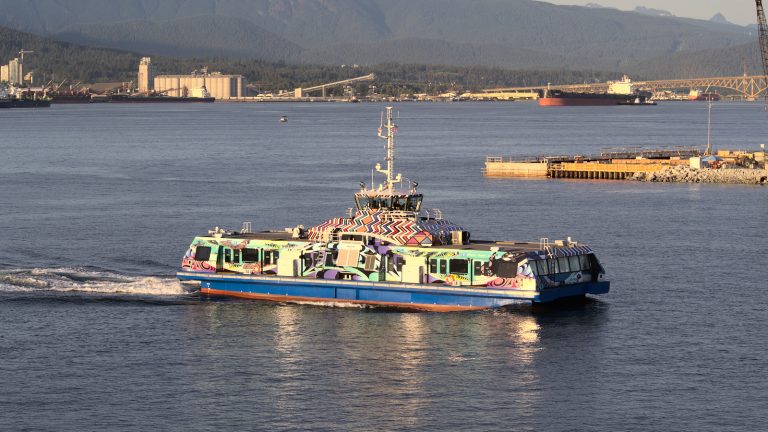Yesterday was the first day the Burrard Chinook (TransLink’s newest SeaBus) was put into revenue service.
The Chinook has a unique livery consisting of art from the Musqueam, Squamish, and Tsleil-Waututh First Nations communities and showcases the Chinook salmon within the ecosystem as well as First Nations cultures.
translink
TransLink’s Electric Battery Buses
About a month ago, TransLink launched its first four electric battery buses on a trial program on the #100 Marpole-22nd Street Station route. There are currently two bus models being trialed: New Flyer XE40, and the Novabus LFSe. These are actually not the first electric battery buses to be run on Vancouver roads. In 2017, TransLink had one demonstration bus from Build Your Dreams (BYD). I never got a chance to ride it though. Whereas the BYD had slow charging (overnight at the depot), the New Flyer and Novabus models here have fast charging at the termini. Two fast charging Continue Reading
Finally tapping in using the Compass Card
Almost two years after the Beta Test, the Compass Card is finally starting to become within reach of the general public. The Compass Card was first rolled out for BC Bus Pass, TransLink employees and CNIB passengers in January 2014. The U-Pass BC started transitioning to Compass early this year. This past week, the Compass Card was made available for West Coast Express customers. TransLink staff were handing out Compass Cards at the Waterfront West Coast Express station this week, so I went to get one on my lunch break. For the past week, I’ve been tapping in and out. For Continue Reading
Comments on the new signage at SkyTrain stations
I was going through some of my photos and came across a set where I was comparing old and new signage on the SkyTrain. Below is one example from Granville Station. You can see the new sign in the foreground, with the existing sign further back. What struck me is how complex the information is on the new sign. The primary emphasis (judging from the size of the text) of the new platform signs is placed on the platform numbers, as opposed to the direction of travel as is in the old sign. In fact, the direction of travel isn’t Continue Reading
Hello Compass Card!
Yesterday when I got home from work, I was excited to find my Compass card waiting for me in my mailbox! Compass is TransLink’s new electronic fare card that will be rolled out in Metro Vancouver this fall. Earlier this year, fare gates were installed in most SkyTrain station entrances, and Compass readers installed on buses. TransLink is running a “beta test” of the Compass system with 10,000 volunteers from September 9th to October 1st (testing before launch is definitely a good idea!). The Compass card uses NFC to communicate with the card readers. There’s a small microchip and an Continue Reading
